7+ Primary Consumers in the Desert and Their Characteristics
Primary consumers in the desert include a diverse range of species such as the desert tortoise, kangaroo rat, desert beetle, desert hare, dromedary camel, desert gerbil, Dorcas gazelle, butterfly, and pocket mice. These organisms primarily feed on vegetation, seeds, and occasionally insects, playing crucial roles in nutrient cycling, seed dispersal, and pollination within the desert ecosystem. They have evolved various adaptations to survive in the harsh desert environment, including efficient water conservation mechanisms, specialized feeding habits, and behavioral strategies for coping with extreme temperatures.
1. Desert Tortoise
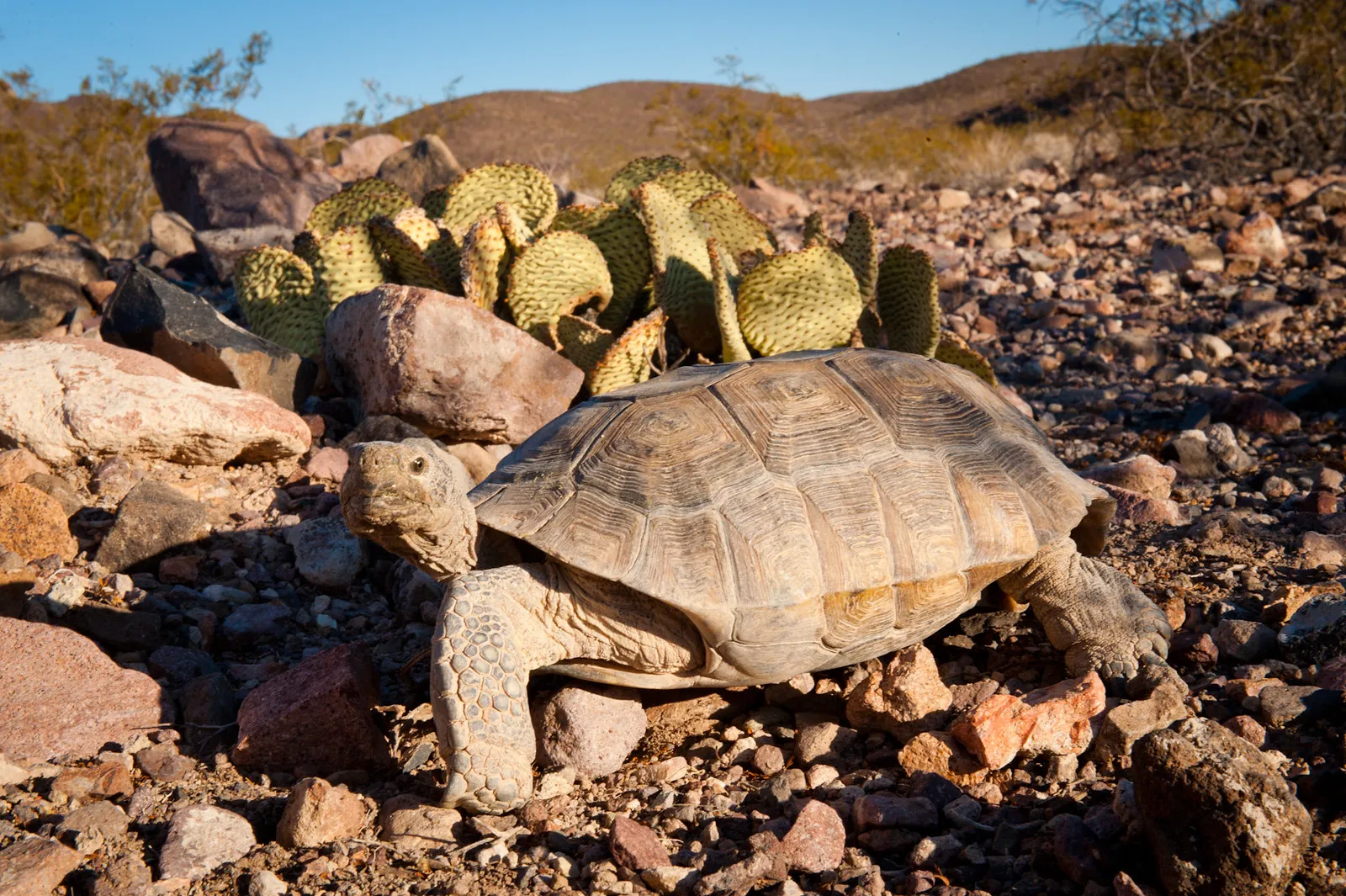
Desert tortoises (Gopherus agassizii) are iconic inhabitants of arid regions, particularly in the deserts of North America. As primary consumers, they play a crucial role in the desert ecosystem by feeding on various plant materials, such as grasses, wildflowers, cacti, and other succulents. Their diet primarily consists of low-lying vegetation found within their habitat.
Diet: Desert tortoises are herbivores, meaning they consume plant matter exclusively. They have adapted to consume a variety of desert plants, including those with tough, fibrous, or spiny tissues. Their diet typically includes grasses, herbs, shrubs, and cacti, which provide them with the necessary nutrients and moisture to survive in their harsh environment.
Feeding Habits: Desert tortoises are primarily active during the cooler hours of the day, such as early morning or late afternoon, to avoid the intense heat of the desert sun. They are known to graze slowly and methodically, using their powerful jaws and beak-like mouth to tear and chew vegetation. Their feeding behavior helps regulate plant growth and distribution within the desert ecosystem.
Water Requirements: One of the remarkable adaptations of desert tortoises is their ability to obtain moisture from the plants they consume, significantly reducing their need for free-standing water. They can also reabsorb water from their bladders when needed, allowing them to survive in extremely dry environments where water sources are scarce.
Ecological Importance: As primary consumers, desert tortoises play a crucial role in energy transfer within the desert food web. By feeding on vegetation, they help control plant populations and contribute to nutrient cycling in the ecosystem. Additionally, their burrowing behavior creates microhabitats that benefit other desert species, such as small mammals, reptiles, and invertebrates.
Conservation Status: Despite their ecological importance, desert tortoise populations have declined significantly due to habitat loss, fragmentation, disease, and other human-induced threats. They are listed as a threatened species under the Endangered Species Act, highlighting the need for conservation efforts to protect their habitat and ensure their survival in the wild.
2. Kangaroo Rat
Diet: Kangaroo rats (Dipodomys spp.) are primary consumers in the desert ecosystem, primarily feeding on seeds, vegetation, and occasionally insects. They have specialized cheek pouches that allow them to collect and store seeds efficiently, making them well-adapted to the desert’s sporadic food availability.
Feeding Habits: These nocturnal rodents are highly efficient foragers, using their keen senses of smell and hearing to locate seeds and plants in the dark. They are known to hop and bound like their namesake, covering large distances in search of food. Kangaroo rats are also known for their ability to survive without drinking water, obtaining moisture from the seeds they consume.
Ecological Importance: Kangaroo rats play a crucial role in seed dispersal within the desert ecosystem. By collecting and storing seeds in their burrows, they inadvertently plant seeds in different locations, contributing to the regeneration of plant populations. Their burrowing activity also aerates the soil and creates habitat for other desert organisms.
Conservation Status: While kangaroo rats are not currently listed as threatened or endangered, habitat loss, fragmentation, and predation by invasive species pose significant threats to their populations. Conservation efforts focus on preserving and restoring their desert habitat to maintain healthy populations of these important primary consumers.
3. Desert Beetle
Diet: Desert beetles (Family: Tenebrionidae) are primary consumers that feed on a variety of organic matter, including plant debris, dead animals, and other detritus found in the desert environment. Some species are also herbivorous, consuming plant leaves, stems, and roots as part of their diet.
Feeding Habits: These beetles are well-adapted to the harsh desert conditions, with some species exhibiting nocturnal feeding behaviors to avoid the heat of the day. They are opportunistic feeders, scavenging for food whenever it’s available. Some desert beetle species have specialized mouthparts for efficiently breaking down tough plant material.
Ecological Importance: Desert beetles play a vital role in nutrient recycling within the desert ecosystem. By consuming organic matter and plant debris, they help decompose and break down dead material, releasing essential nutrients back into the soil. This process contributes to soil fertility and supports the growth of desert vegetation.
Adaptations: To survive in arid environments, desert beetles have developed various adaptations, such as efficient water conservation mechanisms and heat tolerance. Some species have protective exoskeletons or chemical defenses against predators, allowing them to thrive in the desert’s harsh conditions.
4. Desert Hare
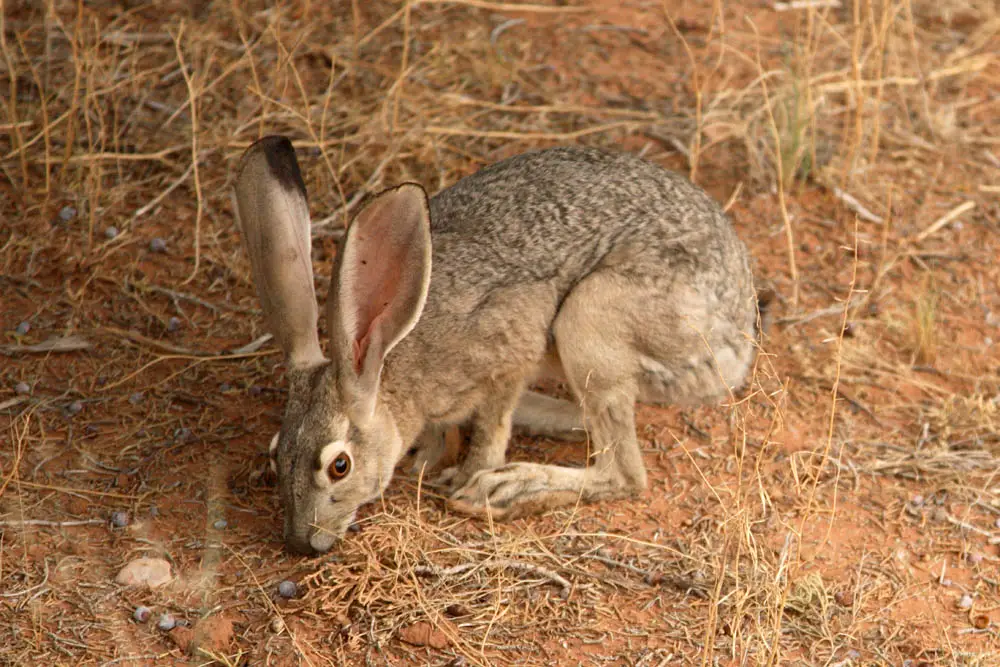
Diet: Desert hares (Lepus spp.) are primary consumers that primarily feed on a variety of desert vegetation, including grasses, herbs, shrubs, and cacti. They are well-adapted to browse on tough, fibrous plant materials found in their arid habitat.
Feeding Habits: These nocturnal mammals are adept at finding food in the desert landscape, using their keen senses of smell and sight to locate vegetation even in low-light conditions. Desert hares are also known to consume their feces to extract additional nutrients, a behavior known as coprophagy, which helps them maximize their food intake in nutrient-poor environments.
Ecological Importance: Desert hares play a role in controlling plant populations and shaping vegetation dynamics within the desert ecosystem through their grazing behavior. By consuming plant material, they influence plant growth patterns and contribute to nutrient cycling in the soil. Additionally, they serve as prey for various predators, contributing to the desert food web’s complexity.
Adaptations: To survive in the harsh desert environment, desert hares have evolved physiological adaptations such as efficient water conservation mechanisms and specialized digestive systems for processing tough plant material. Their cryptic coloration and swift running ability also help them evade predators in their arid habitat.
5. Dromedary Camel
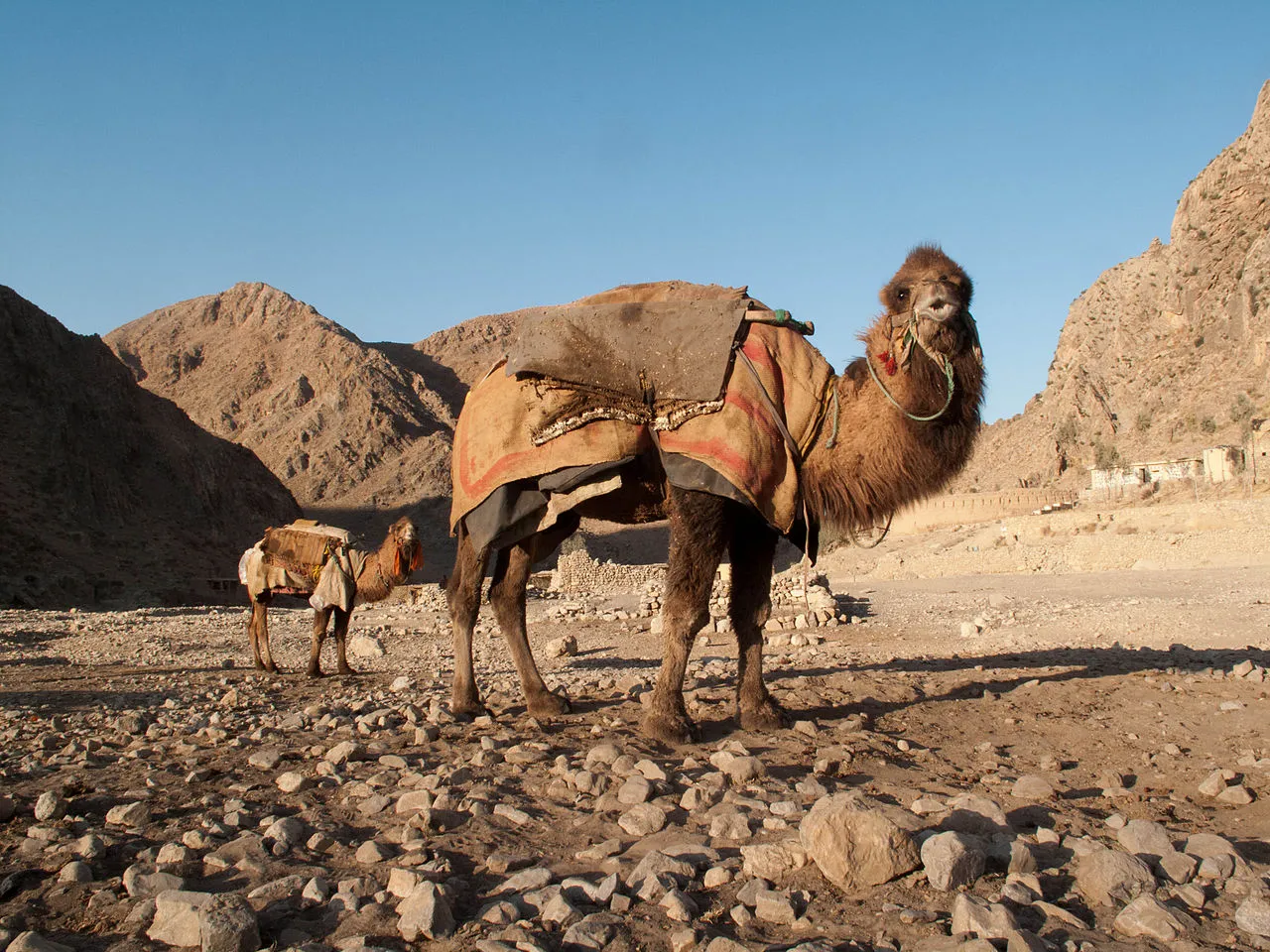
Diet: Dromedary camels (Camelus dromedarius) are primary consumers that primarily feed on desert vegetation, including thorny shrubs, dry grasses, and saltbushes. They are well-adapted to browse on tough, fibrous plant materials found in arid regions, making them valuable herbivores in the desert ecosystem.
Feeding Habits: Camels are capable of consuming a wide variety of plant species, allowing them to adapt to the unpredictable availability of food in the desert. They are known for their ability to go extended periods without water, as they can obtain moisture from the plants they consume and efficiently conserve water in their bodies.
Ecological Importance: Dromedary camels play a crucial role in nutrient cycling and seed dispersal within the desert ecosystem. By grazing on vegetation, they help control plant populations and shape vegetation dynamics in their habitat. Additionally, their digestive systems may aid in seed dispersal, as seeds consumed by camels can pass through their digestive tract and be deposited in new locations, contributing to plant dispersal and regeneration.
Adaptations: Camels have evolved numerous adaptations to survive in desert environments, including specialized physiological mechanisms for water conservation, such as the ability to reabsorb water from their urine and maintain hydration despite high temperatures and limited water sources. Their unique anatomy, including padded feet for walking on sand and a hump for storing fat reserves, further enhances their ability to thrive in arid conditions.
6. Desert Gerbil
Diet: Desert gerbils (Meriones spp.) are primary consumers that primarily feed on seeds, vegetation, and occasionally insects. They are opportunistic feeders, consuming a variety of plant materials found in their desert habitat, including grasses, herbs, and shrubs.
Feeding Habits: These small rodents are primarily nocturnal, foraging for food during the cooler hours of the night to avoid the heat of the day. They use their keen senses of smell and hearing to locate seeds and plants in the dark, often digging for roots and bulbs buried beneath the desert soil.
Ecological Importance: Desert gerbils play a role in seed dispersal within the desert ecosystem. By consuming seeds and vegetation, they inadvertently aid in the dispersal of seeds to new locations, contributing to the regeneration of plant populations. Their burrowing activity also aerates the soil and creates habitat for other desert organisms.
Adaptations: To survive in the harsh desert environment, desert gerbils have evolved physiological adaptations such as efficient water conservation mechanisms and the ability to tolerate high temperatures. Their burrowing behavior provides them with shelter from extreme weather conditions and protection from predators, allowing them to thrive in arid regions.
7. Dorcas Gazelle
Diet: Dorcas gazelles (Gazella dorcas) are primary consumers that primarily feed on desert vegetation, including grasses, herbs, shrubs, and succulent plants. They are well-adapted to browsing on a variety of plant materials found in their arid habitat.
Feeding Habits: These small antelope are herbivorous and primarily feed during the cooler hours of the day to avoid the heat of the desert sun. They use their keen senses of sight, smell, and hearing to locate vegetation in their environment, grazing on grasses and browsing on shrubs and herbs.
Ecological Importance: Dorcas gazelles play a crucial role in shaping vegetation dynamics and nutrient cycling within the desert ecosystem. By grazing on vegetation, they help control plant populations and contribute to the redistribution of nutrients in the soil. Additionally, their grazing behavior creates microhabitats that benefit other desert species.
Conservation Status: Dorcas gazelles are listed as a species of least concern by the International Union for Conservation of Nature (IUCN), indicating that their populations are currently stable. However, habitat loss, fragmentation, and poaching pose significant threats to their long-term survival in the wild. Conservation efforts focus on protecting their desert habitat and mitigating human-induced threats to their populations.
8. Butterfly
Diet: Butterflies in desert ecosystems primarily feed on nectar from flowering plants. They are attracted to a variety of desert-adapted flowers that bloom throughout the year, providing them with a consistent food source. Some butterfly species also feed on other organic matter, such as rotting fruit, sap, or animal dung.
Feeding Habits: Butterflies have specialized mouthparts called proboscises, which they use to sip nectar from flowers. They are highly selective in their flower choices, often preferring flowers with tubular shapes that allow them to access the nectar easily. Butterflies are important pollinators in desert ecosystems, transferring pollen between flowers as they feed.
Ecological Importance: Butterflies play a crucial role in pollination, facilitating the reproduction of flowering plants in the desert ecosystem. By transferring pollen between flowers, they contribute to the fertilization of plants and the production of seeds. This process is essential for maintaining plant diversity and supporting other desert organisms that rely on these plants for food and habitat.
Adaptations: To survive in desert environments, butterflies have evolved various adaptations to conserve energy and water. Some species exhibit behaviors such as basking in the sun to regulate their body temperature or seeking shade during the hottest parts of the day. Additionally, butterflies may have specialized physiological mechanisms for extracting nutrients and moisture from their food sources.
9. Pocket Mice
Diet: Pocket mice (Family: Heteromyidae) are primary consumers that feed on a variety of seeds, vegetation, and occasionally insects. They are well-adapted to the desert environment, where they forage for food in the sandy soils using their specialized cheek pouches to collect and store seeds.
Feeding Habits: These nocturnal rodents are efficient foragers, using their keen senses of smell and touch to locate seeds and plants buried beneath the desert sand. They are known for their ability to hoard seeds in underground burrows, creating food caches that sustain them during periods of scarcity.
Ecological Importance: Pocket mice play a role in seed dispersal within the desert ecosystem. By collecting and hoarding seeds, they inadvertently plant seeds in different locations, contributing to the regeneration of plant populations. Additionally, their burrowing activity aerates the soil and creates habitat for other desert organisms.
Adaptations: To survive in arid environments, pocket mice have evolved physiological adaptations such as efficient water conservation mechanisms and specialized digestive systems for processing seeds. Their burrowing behavior provides them with shelter from extreme temperatures and protection from predators, allowing them to thrive in desert habitats.
| Primary Consumer | Diet | Feeding Habits |
| 1. Desert Tortoise | Herbivorous | Grazes on low-lying vegetation during cooler hours of the day. |
| 2. Kangaroo Rat | Herbivorous | Nocturnal forager, efficiently collects and stores seeds. |
| 3. Desert Beetle | Omnivorous | Scavenges for plant debris, dead animals, and detritus. |
| 4. Desert Hare | Herbivorous | Nocturnal feeder, consumes various desert vegetation. |
| 5. Dromedary Camel | Herbivorous | Grazes on desert vegetation, browses on tough plants. |
| 6. Desert Gerbil | Herbivorous | Nocturnal forager, consumes seeds and vegetation. |
| 7. Dorcas Gazelle | Herbivorous | Feeds on grasses, herbs, shrubs in cooler hours of the day. |
| 8. Butterfly | Herbivorous | Sips nectar from flowering plants, pollinates. |
| 9. Pocket Mice | Herbivorous | Nocturnal forager, collects and stores seeds. |
| Leaf-Eating Insects | Insects such as caterpillars and beetles feeding on leaves, stems, and flowers. |
Influence plant populations and serve as prey for other organisms.
|
| Herbivorous Rodents | Rodents like agoutis and porcupines feeding on fruits, seeds, nuts, leaves, and roots. |
Contribute to seed dispersal and nutrient cycling.
|
| Deer and Ungulates | Herbivorous mammals like deer and peccaries consuming leaves, grasses, fruits, and young shoots. |
Influence plant communities through grazing and serve as prey for predators.
|
| Leaf-Cutter Ants | Social ants cutting and processing leaves to cultivate fungus for food. |
Accelerate decomposition and enhance soil fertility.
|
| Small Birds Feeding on Fruits and Seeds | Small birds like certain finch and tanager species consuming fruits and seeds. |
Contribute to seed dispersal and pollination.
|
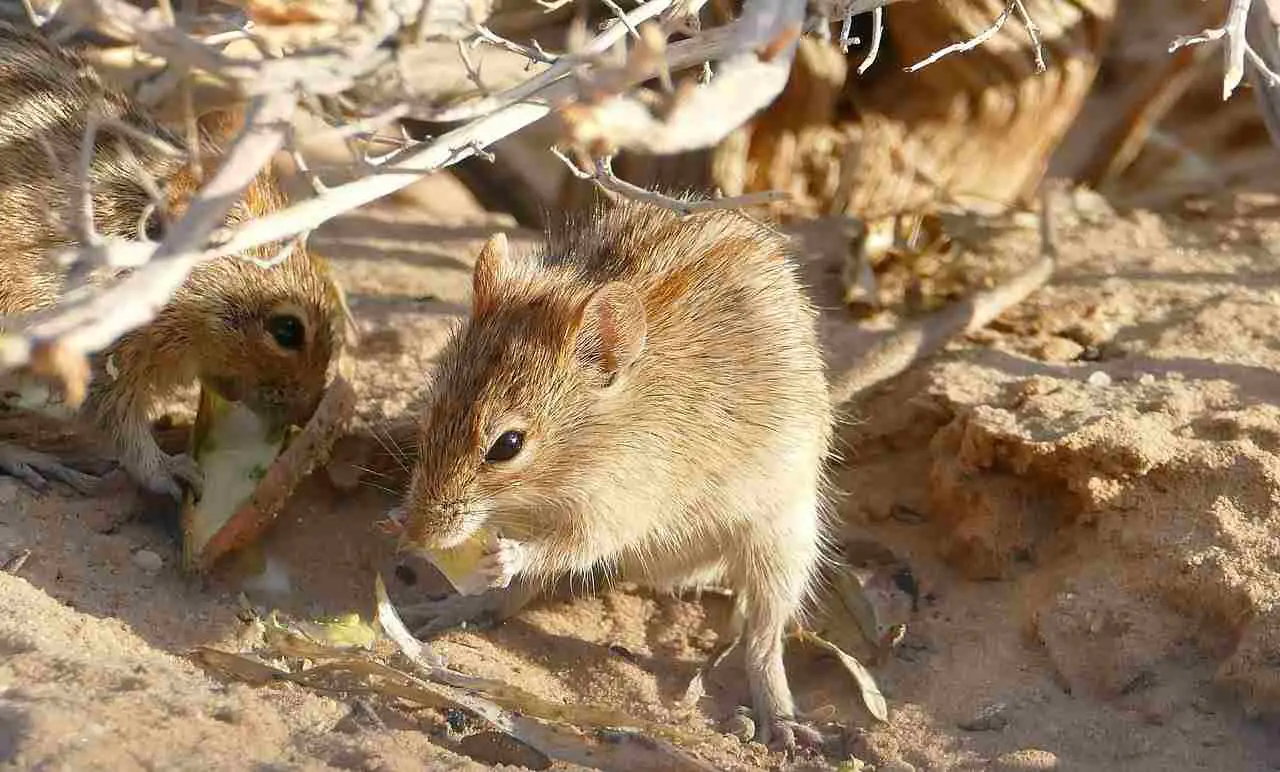
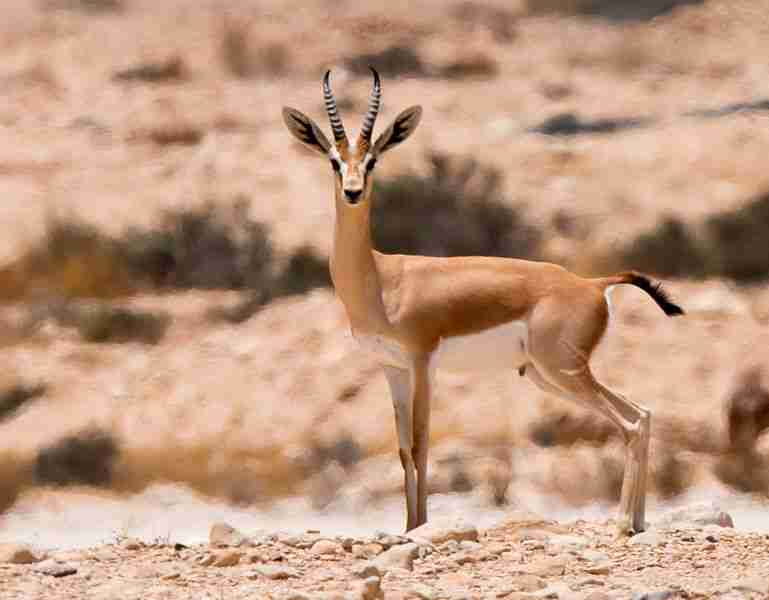
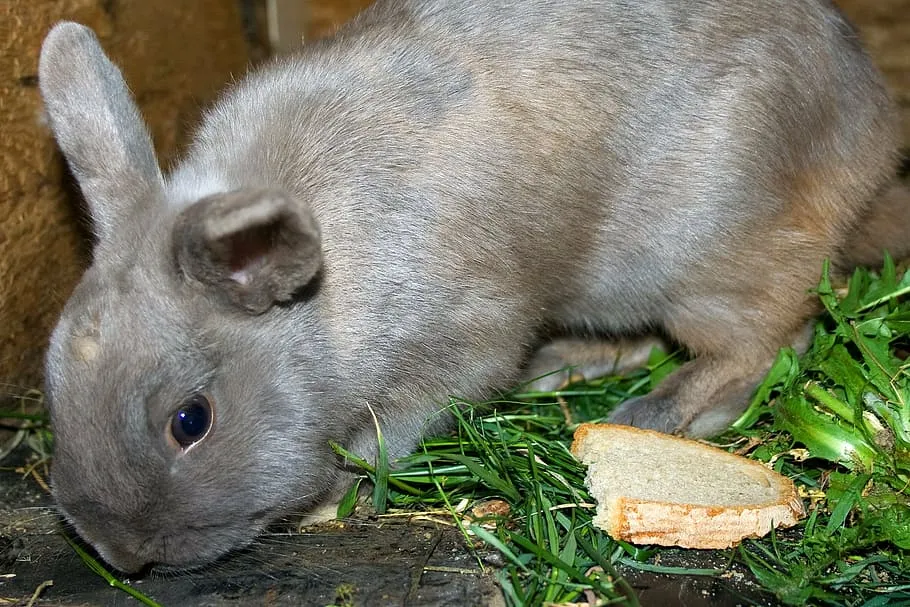
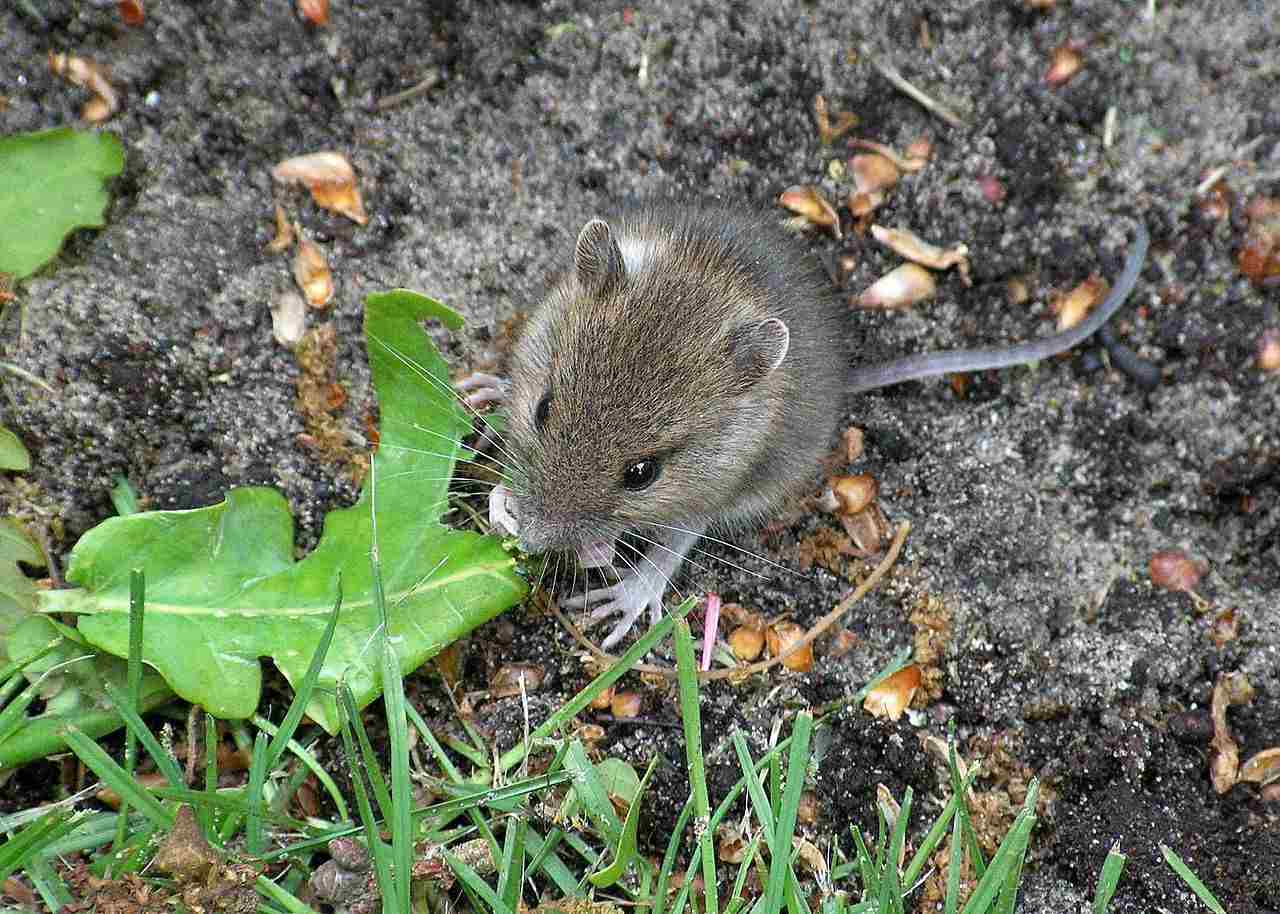
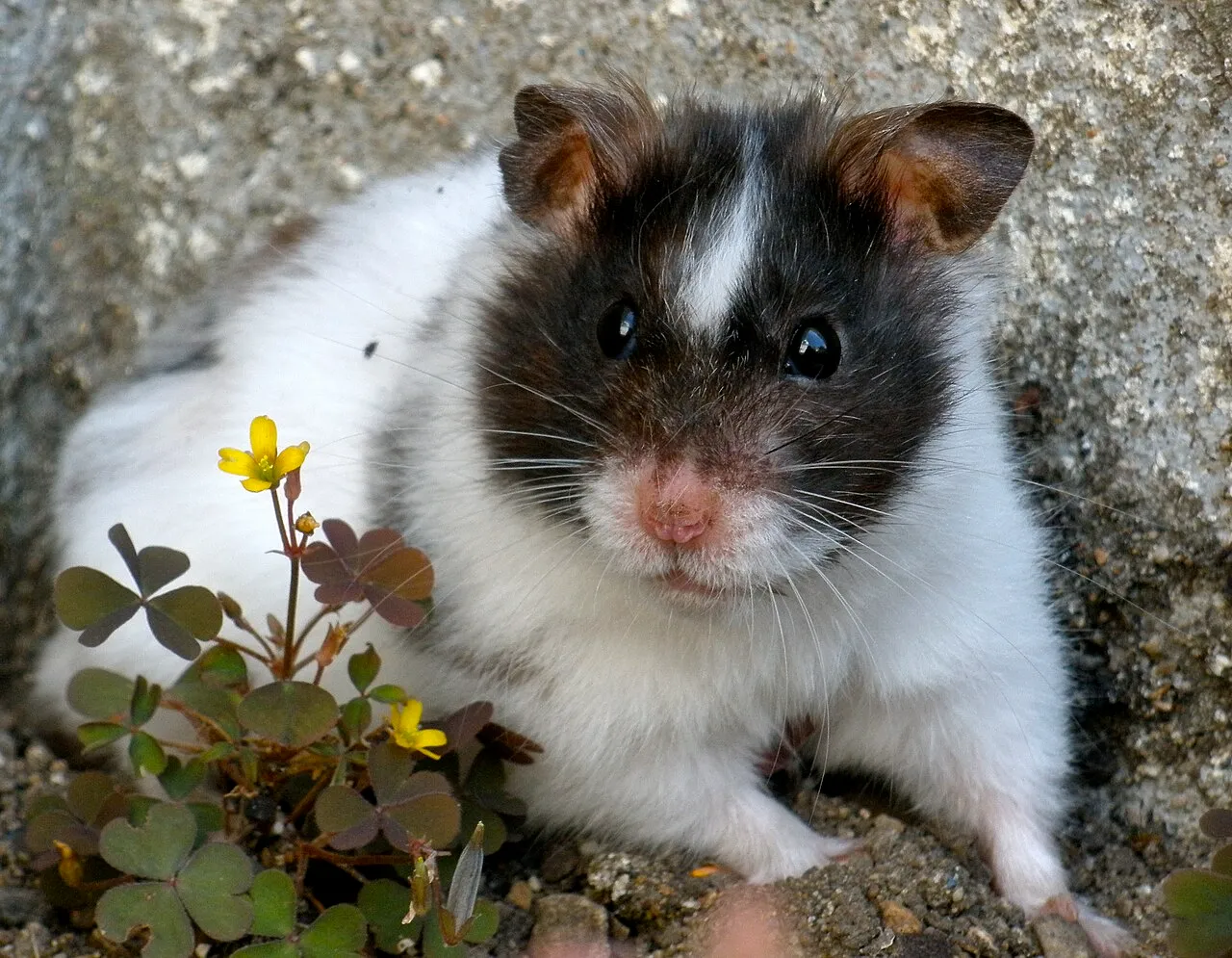
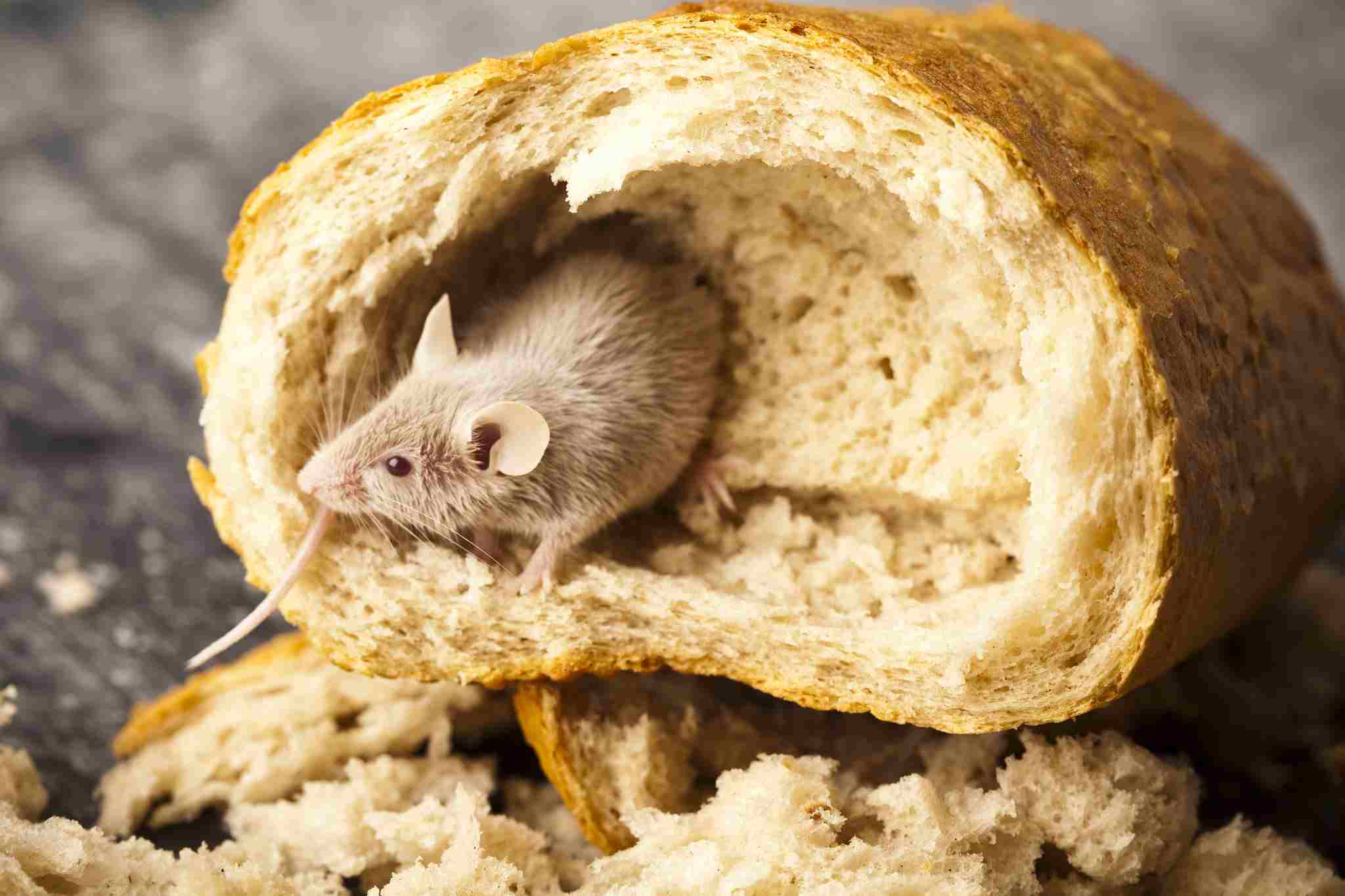
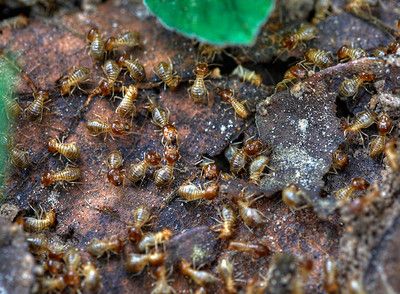

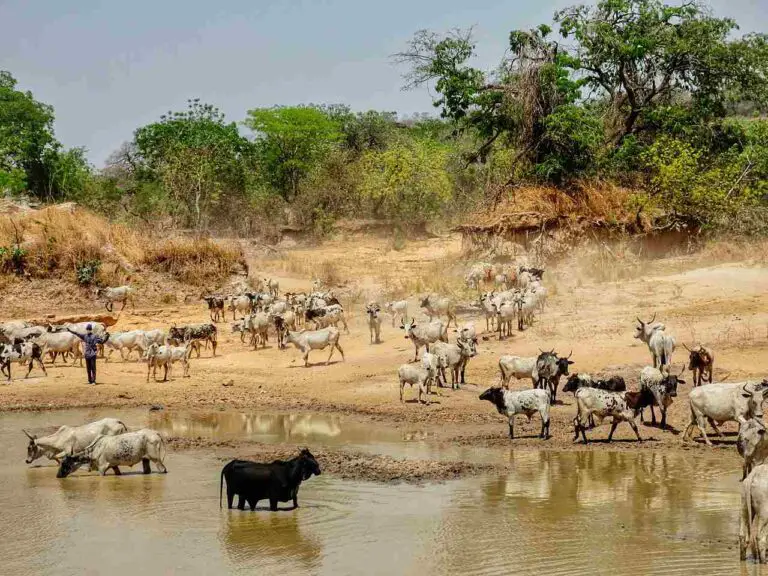
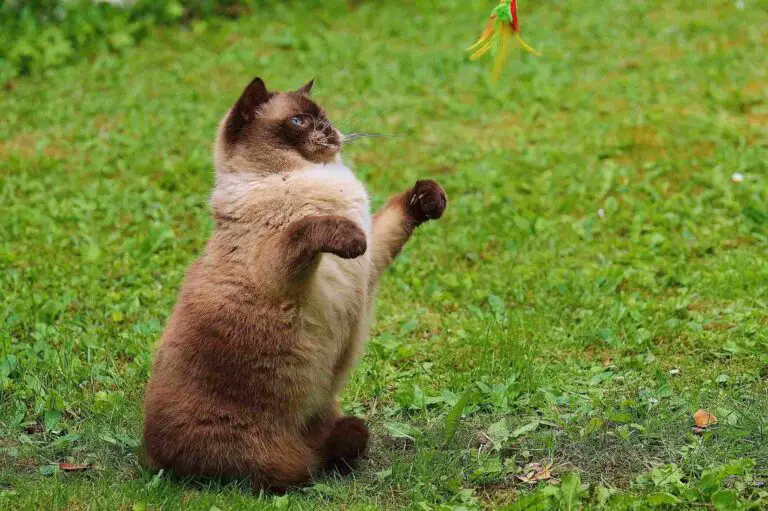
I do trust all the ideas youve presented in your post They are really convincing and will definitely work Nonetheless the posts are too short for newbies May just you please lengthen them a bit from next time Thank you for the post
Hi, thank you for taking the time to share your suggestion. It is noted. Feel free to specify where you may have need too.
Nice blog here Also your site loads up very fast What host are you using Can I get your affiliate link to your host I wish my site loaded up as quickly as yours lol
hiI like your writing so much share we be in contact more approximately your article on AOL I need a specialist in this area to resolve my problem Maybe that is you Looking ahead to see you
Very much appreciated. No worries, just let us know what you need here in the comments’ section or send us an email at felsics@gmail.com.